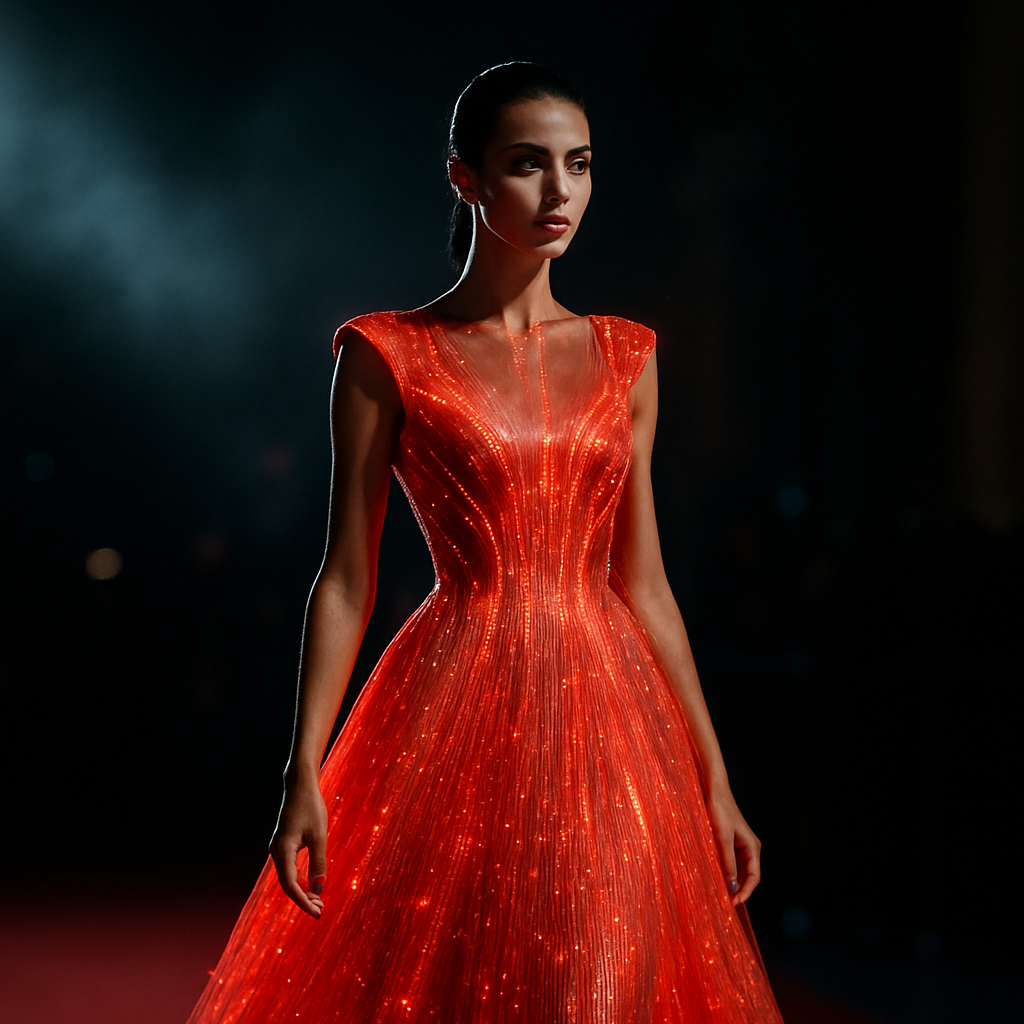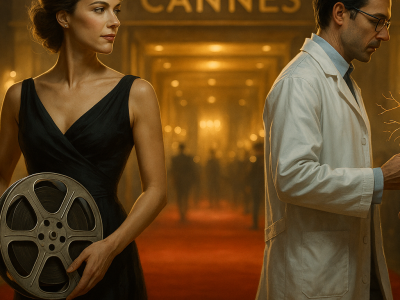The lights dimmed. Cameras flashed. A thousand designer heels clicked across the red carpet. But amidst all the couture and celebrity sparkle, something else shimmered, something unexpected. It wasn’t just glamour. It was science.
This year’s Met Gala theme, “Sleeping Beauties: Reawakening Fashion,” may have conjured images of fairy tales, but the red carpet told a different story: one written in fibre optics, 3D-printed polymers and wearable tech. Spanish singer Rosalía stunned audiences in a sculpted white gown by Olivier Rousteing that mimicked the form of a dressmaker’s mannequin. Actress Jenna Ortega turned heads in a Balmain dress composed entirely of metallic rulers, paying homage not only to the craft of tailoring but to precision, mathematics, and the silent geometry behind every stitch.
Once seen merely as a parade of extravagance, the Met Gala has quietly evolved into one of the most unexpected stages for the popularisation of science and technology. Every May, as the Metropolitan Museum of Art opens its annual Costume Institute exhibition, its guest list of celebrities, designers, and cultural tastemakers becomes a living, breathing display of how deeply innovation is stitched into the fabric of modern fashion.
Why the met gala matters to science
The Met Gala is widely viewed as the pinnacle of fashion, yet its ties to science are surprisingly rich. It is here that material science meets artistry, and artificial intelligence reshapes creativity. Fashion is no longer confined to silk and sequins. Today, it includes conductive fabrics, engineered biotextiles, and garments embedded with sensors or code.
But perhaps more importantly, it introduces these concepts to a global audience. Few scientific journals can compete with the reach of an image that travels from the steps of the Met to a billion screens overnight.
Scientific couture: A timeline of innovation
The 2016 Met Gala theme, “Manus x Machina: Fashion in an Age of Technology,” marked a turning point. That year, fashion openly embraced its relationship with technology. Claire Danes wore a light-up Cinderella gown by Zac Posen embedded with fibre optics, glowing elegantly in the dark. Karolina Kurkova arrived in the world’s first cognitive dress, created in collaboration with Marchesa and IBM Watson. The dress’s LED flowers changed colour based on sentiment analysis from tweets about the event.
Singer Zayn Malik made headlines with his Versace suit that featured chrome-plated robotic arms, hinting at the rise of cyborg fashion. Katy Perry brought a touch of tech nostalgia with a Tamagotchi clipped to her dress. Taylor Swift, the co-chair that year, showcased a futuristic silver mini dress by Louis Vuitton, echoing metallic textures often found in space-age materials.
In subsequent years, the interplay between fashion and science persisted. In 2021, the Met Gala theme “In America: A Lexicon of Fashion” saw guests exploring sustainability, a concept deeply rooted in environmental science. Emma Watson wore a gown made entirely from recycled plastic bottles by Harris Reed. It wasn’t just a dress; it was a commentary on climate change.
Rosalía and Ortega’s 2025 appearances continued this legacy. Though the theme focused on Black fashion and the politics of tailoring, their outfits showed how the tools of science, such as structure, precision, and innovation, are woven into even the most conceptual artistic statements.
Beyond the gown: The science in materials
The fashion industry is increasingly reliant on advances in material science. Modern designers are experimenting with everything from mushroom leather (mycelium) to fabrics made from algae and bacterial cellulose. These materials are not only biodegradable but often produced with a smaller carbon footprint than traditional textiles.
At the Met Gala, these materials find their spotlight. Some attendees have worn pieces that adapt to the wearer’s body temperature or respond to touch. In one memorable instance, a dress shifted colours in real-time using thermochromic ink, a technique born from thermodynamics and molecular chemistry.
Fibre optics have become a staple in avant-garde fashion. By transmitting light through ultra-thin strands of glass or plastic, designers create garments that glow, pulse or change hue in response to sound. These are not just gimmicks; they reflect ongoing research in photonics and responsive design.
Artificial intelligence as co-designer
The role of AI in fashion has moved beyond inspiration boards. With generative design tools, AI can now create prints, patterns, and entire collections. At the 2016 Met Gala, IBM Watson didn’t just change the colour of Karolina Kurkova’s dress; it helped design it. Drawing from emotional analytics and social media trends, Watson made real-time decisions about lighting and colour.
Today, AI continues to blur the lines between engineer and artist. Algorithms predict trends, optimise fabric usage to reduce waste, and even generate sketches based on keywords. Though not always visible, AI’s fingerprints are all over the red carpet.
And that raises a question: if a machine can design a dress that moves people emotionally, where does the artistry begin and end?
Pop culture, science and the power of spectacle
In a time when science communication struggles to reach mainstream audiences, the Met Gala provides a surprising gateway. Pop culture offers a powerful vehicle for scientific storytelling. A glowing gown can spark interest in light refraction. A robotic arm can provoke questions about prosthetics or human augmentation.
This fusion isn’t accidental. Museums and cultural institutions increasingly collaborate with scientists and engineers. In turn, researchers are embracing the power of narrative, spectacle, and even celebrity, to popularise complex ideas.
what the 2025 met gala tells us about the future
If this year’s event proved anything, it’s that science and art are not opposites. They are collaborators. Jenna Ortega’s ruler dress, seemingly whimsical, was a nod to the tools that shape both fashion and physics. Rosalía’s sculpted mannequin dress was an ode to the intersection of body and form, a spatial dialogue architects and biomedical engineers know well.
As the boundaries between disciplines continue to blur, events like the Met Gala remind us that public engagement with science doesn’t have to happen in lecture halls. Sometimes, it happens on red carpets.
The viral factor: Can science go haute couture?
Visibility matters. When science-themed outfits go viral, they create opportunities for deeper conversations. After Claire Danes’s glowing gown, there was a surge in online interest in how fibre optics work. Fashion becomes a gateway drug to curiosity.
But it’s not just about views. It’s about cultural memory. People may forget a journal abstract, but they won’t forget a dress that lit up the Met steps.
The Met Gala, strange as it may sound, is part of that bridge. It shows how scientific ideas can be made visible, tactile, and even wearable.
In an era of misinformation and declining trust in experts, reclaiming science’s place in culture is urgent. And if that reclamation happens through fashion, if it happens in tulle and titanium, then so be it.
What would happen if we embraced more spaces where science could dress up, show off, and speak out?
That’s a question worth dressing for.




